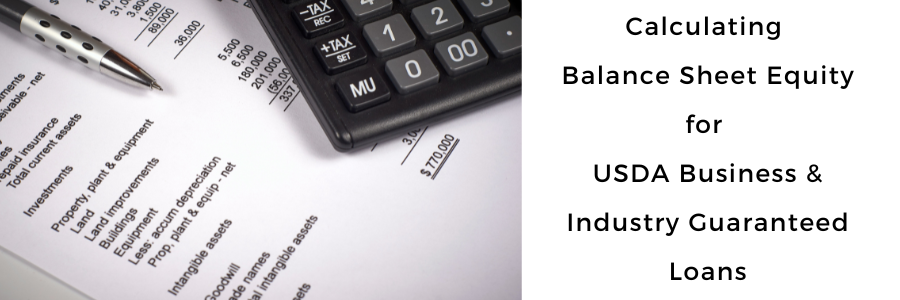Few USDA lenders remember the five ways to lower the USDA Guarantee Fee on any OneRD loan the USDA offers. I can admit I was one of those lenders, however, Hurricane Ian reminded me this “Major Disaster Designation” from the President can reduce the USDA fee to 1% from 3%. Here is a snippet of the regulation including some other options to possibly reduce the guarantee fee. Note, a borrower only needs to check off one of these items to be eligible for the reduced guarantee fee.
ONE RD Regulation RD5001.454
5001.454(1)(1-6)
(1) Is located in a rural community that—
- Is a distressed community in accordance with the Economic Innovation Group distressed community index; or
- Is experiencing long-term population decline according to the last three decennial censuses; or
- Is in a persistent poverty county. A persistent poverty county is any county that has had 20 percent or more of its population living in poverty over the past 30 years, as measured by the 1990 and 2000 decennial census and 2007-2011 American Community Survey 5-year average, or any territory or possession of the United States; or
- Is in a presidentially declared major disaster area, declared within the 24 months preceding the date of the application, and is experiencing trauma as a result of natural disaster; or
- Is located in a city, county, or state with an unemployment rate, as determined by the Department of Labor, 125 percent or greater of the current national rate; or
- Is located within the boundaries of a federally recognized Indian tribe’s reservation or within Tribal trust lands or within land owned by an Alaska Native Regional or Village Corporation as defined by the Alaska Native Claims Settlement Act.
There is a lot to unpack here so let’s do it in order:
(1): The Economic Innovation Group has a map displaying the Distressed Community Index for each district. The map can be found following this link. Note that additional priority points are awarded for those areas labeled “Distressed” on the map and the reduced guarantee fees will only apply to those areas as well.
(2): The USDA would like users to use census data or the BLS website however Google is a great resource for this data. By Googling your city/town and “population” the results will usually include a graph over the last 50 years. You can save this graph in your file to support the lowered Guarantee Fee if the population has declined over the past 30 years.
(3): This metric is a little more difficult to obtain. The USDA has a SharePoint site that should have some data however I have never been able to access the site from both my personal email and bank email. Until I can find a data resource on this, the lender will need to find this data on Google or by asking the USDA for access to the SharePoint site.
(4): You can find a list of all the Presidentially Declared Disaster Areas on my website by following this link or looking under the Documents tab. Please make sure you look at the dates on this document. I will try to keep this updated monthly but make no promises that will happen. You can also go to this link https://www.fema.gov/disasters/year to see for yourself and download the factsheets.
(5): The USDA will give two sites to verify data on. The first, https://www.bls.gov/lau/tables.htm, shows the current US unemployment rate. The second, https://www.bls.gov/charts/employment-situation/civilian-unemployment-rate.htm, will take you to a website with tons of links. Please note that the city data only covers the top 50 cities all of which are not eligible for USDA lending. The county data is available and current however if your county has lower unemployment than the city your project is located this could skew some data. Once again, I would say Googling the city’s unemployment rate may be the best course of action.
(6): This one is one of the easiest to verify. Go to this website, https://biamaps.doi.gov/, click the “US Domestic Sovereign Nations” map, and find your project.
5001.454(2)
(2) Processes, distributes, aggregates, stores, and/or markets locally or regionally produced agricultural food products and promotes access to healthy foods; or
(2): This one is pretty easy to understand but has been difficult to obtain buy-in from different states around the country. To me, if the project would be eligible for the Food Supply Chain program or is a grocery store it would qualify for the reduced guarantee within this subpart.
5001.454(3)(1-2)
(3) Is locally owned and managed, and either
- Supports value-added agriculture and provides a market for locally or regionally produced agricultural food product; or
- Produces a natural resource value-added product/manufactures a product from a natural resource.
(1): This is another example where it is up to the borrower and lender to justify their project to the USDA for a reduced guarantee. Grocery stores, farmer’s markets, and other local markets would only qualify for this in my opinion.
(2): The code says this does not have to be food-based but any value-add like taking trees and turning it into fuel or furniture. The key thing here is that they are taking a raw material and taking it to a final product. The production must be fully vertically integrated except for the farming/mining/harvesting of the raw material.
5001.454(4)
(4) Is part of a strategic economic development and community development plan on a multi-jurisdictional and multi-sectoral basis in accordance with Section 6401 of the Agricultural Improvement Act of 2018 (Pub. L. 115-334); or
(4): There is a website for information on these items. Note this will be for WWD and CF loans.
5001.454(5)
(5) Provides an additional market for existing local businesses by purchasing substantial amounts of products or services from, selling products to, or providing services to existing local and regional businesses.
(5): This is another example where a lender and borrower will need to show how the project will use or is using a “substantial amount” of local businesses in their production or service delivery. Use of Janitorial, pest control, landscaping, or other types of services does not meet these criteria. It must be for what is being sold by the business, not to maintain the operations.
Conclusion
There are numerous ways to obtain a reduced USDA guarantee fee. I find that many lenders do not take the time to qualify their borrowers for these reductions.
Link to Disaster Spreadsheet to Dowloand:
In the future, I will host a map with as many of these designations meeting the USDA RD5001 criteria of 2 years. I am hoping to have an interactive application where you can insert the address and get all of the priority scoring information, the location-based eligibility, and if the project is located in the FEMA Major Disaster Area. A long tail going would be to include unemployment, poverty rates, and other economic information. Stay tuned as we finish that up!



